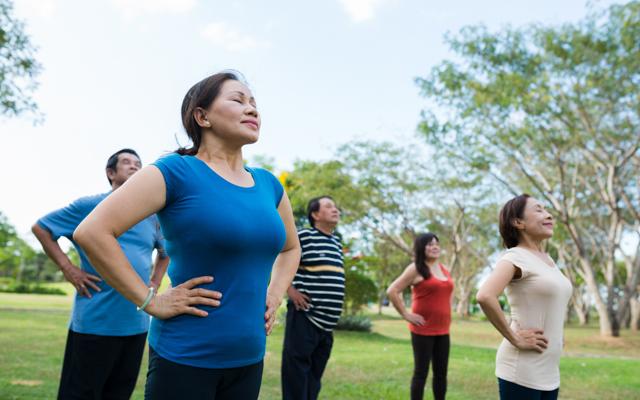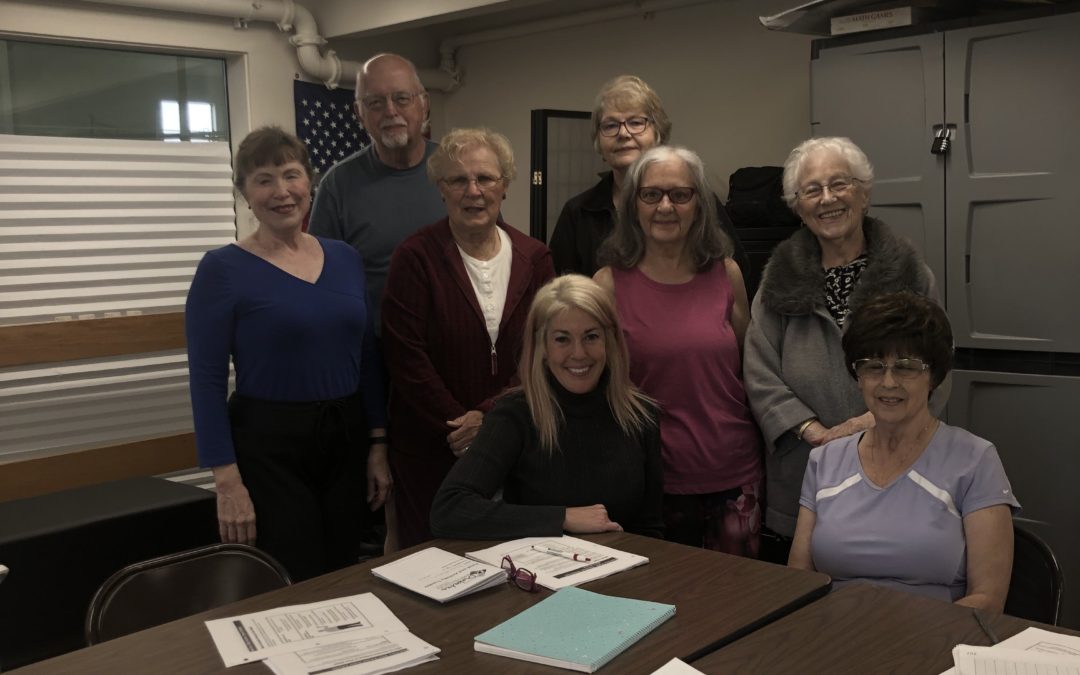
by Shelby | Oct 31, 2023 | Eat Well, Featured, Move Well
On this Hallow’s Eve, whether your night has many frights and spooky lights in store or will be filled with the warm glow of Jack-o’-lanterns as you answer the door to your festive visitors, we combined tips from the CDC and Dana Zia, the Tillamook County Pioneer’s food writer, to help provide you with some tricks in your trick or treat tonight.
Treats:
Not all treats are created equal; there may be a considerable amount of sugar in the treats your goblins or ghosts (and even yourself) consume. Dana Zia shared with us that an estimated 2 billion dollars is spent on Halloween candy each year. For context she adds, “that is enough for 20,000 students to attend a decent college for 4 years, or to feed 303,030 kids in Ghana, Africa for a year!” Eating a nutritious meal, drinking plenty of water (bring water with you) and enjoying the candy in moderation is a way to offset the anticipated sugar load. It is also important to inspect the candy’s packaging before eating, and only eat factory-wrapped treats. If you have any doubt about the safety of a treat, throw it out.
Halloween can be extra tricky for trick-or-treaters with food allergies. Just as with inspecting the candy before eating, if you have an allergy, always read the label on the treat, and throw it out if the label is missing. If an epinephrine auto-injector is prescribed to you or your spooky trick or treater, it is a good idea to carry it with you. If you see “teal pumpkins” with a trick-or-treater, this is a good indication that that superhero or princess has a food allergy. The Teal Pumpkin project was started by Food Allergy Research and Education (FARE) to start a worldwide movement to make Halloween more inclusive and safer for all by providing non-food treats, such as stickers, school supplies, and small toys, to kids with allergies, who can be more easily identified by carrying “teal pumpkins.”
Tricks:
The CDC shares the frightening fact that children, on average, are 2x more likely to be hit by a car and killed on Halloween than on any other day of the year. It is important to be prepared with safety in mind and keep these tricks up your sleeve before going out on Hallow’s eve.
Make yourself more visible to traffic by adding reflective tape to costumes and candy bags and by carrying a flashlight (check the batteries before heading out!). Trick-or-treating is safer in a group, with at least one responsible adult. Stick to the sidewalks when possible, walk, do not run between houses, and stay on the far edge of the road on the side that is facing traffic if walking on the road cannot be avoided. ALWAYS look both ways before crossing the street at a crosswalk or intersection. It is a good idea for each member who is trick or treating to carry emergency contact information in case lost or separated from caretakers or group.
We wish you all safe and happy hauntings tonight. For more information on Halloween safety from the CDC please visit CDC.org and search for “Halloween safety.” For more wellness information, visit our website at https://tillamookcountywellness.org/ and follow Tillamook County Wellness on social media.
Resources: Dana Zia’s from 2016 (https://tillamookcountywellness.org/scary-things-food-halloween/) and CDC blog https://blogs.cdc.gov/publichealthmatters/2019/10/halloweentips/

by Shelby | Dec 5, 2019 | Being Well
We are fortunate to live in a community that has grown and supported each other over the years. Charitable donations and time spent volunteering play a significant role in our state and county. In fact, the Giving in Oregon Guide reports that in 2014 Oregonians donated 2.28% of their adjusted gross income, and in Tillamook county the total contribution was $3,712,349 to charitable causes. These resources go a long way to helping local non-profits provide services that enhance the well-being of our residents. While many nonprofit organizations rely on donations of time and monetary value, it turns out that research shows making charitable donations and volunteering has significant health benefits for the donor as well!
According to a study published in the BMC Public Health Journal, health benefits of volunteering include better mental and physical health, an increase in life satisfaction and happiness, and lower symptoms of depression. In addition, the Cleveland Clinic notes decrease in blood pressure and an increase in life expectancy as related health benefits to giving. Along with health benefits, volunteering and making donations also creates a larger sense of self, an increased feeling of belonging to your community through your charitable efforts.
Be on the lookout for the annual Tillamook County Giving Guide – a guide to support our local nonprofits and keep supporting our community! When available, you can locate the giving guide on the Tillamook County Pioneer website at www.tillamookcountypioneer.net.
For more local health and wellness information follow Tillamook County Wellness on Facebook, Instagram and Twitter.
# # #

by Shelby | Nov 20, 2019 | Being Well
The American Cancer Society reports that 34 million Americans still smoke cigarettes, and smoking remains the single largest preventable cause of death and illness in the world. The estimated smoking related deaths every year is 480,000, or nearly 1 in 5 deaths, and over 16 million Americans live with a smoking-related disease. Quitting tobacco may not be easy. If you are thinking about it, or even ready to do so, setting a quit date may serve as your first step. November 21st is annual “The Great American Smokeout,” by choosing this date as your quit date, you will join thousands from all across the country in taking an important step toward a healthier life and reducing your cancer and chronic disease risk.
Quitting smoking improves health immediately at any age. According to the CDC, smoking is a risk factor for type 2 diabetes, and makes your diabetes – any type, harder to control. In fact, the CDC further reports, smokers are 30–40% more likely to develop type 2 diabetes than nonsmokers. The more you smoke; more you are at risk of developing type 2 diabetes.
You don’t have to stop smoking in one day or do it alone. Start with day one, and know there are resources available to support you, such as counseling and medications. It can often take multiple attempts to successfully quit tobacco use. Speak with your primary care doctor or for free help, call 1-800-QUIT-NOW, and visit quitnow.net/Oregon.
If you are a support person to someone who is trying to quit, you may also find some helpful “Do’s and Don’ts” at https://www.cancer.org/healthy/stay-away-from-tobacco/helping-a-smoker-quit.html.
For more local health and wellness information, follow Tillamook County Wellness on Facebook, Instagram and Twitter.

by Shelby | Oct 17, 2019 | Being Well
Are you at risk for type 2 diabetes or know someone who is? In Tillamook County, there is currently 11.3% of the population that have type 2 diabetes, and approximately 30% at risk for prediabetes. The American College of Sports Medicine and the American Diabetes Association through their research “Exercise and Type 2 Diabetes,” found that lifestyle modifications such as those taught by the Diabetes Prevention Program (DPP) reduced the number of people with type 2 diabetes by 58%. Fortunately, the YMCA in Tillamook offers DPP, which is a Center for Disease Control and Prevention National Diabetes Prevention Program. The program is sponsored by Northwest Senior and Disability (NWSDS), and is at no cost for those who qualify. The DPP class is offered weekly for the first 16 weeks and take place during the lunch hour, noon-1 p.m. on Tuesdays. After the first 4 months, the group meets every other week. Program instructor Kelly Benson praises the program, emphasizing the success of the group in being able to track their progress, and notes an overall successful effort in individual attitude and perception change.
Taking a closer look at the program, DPP participants will work with a knowledgeable lifestyle coach in a small group setting who will introduce topics on healthy eating, physical activity, behavior changes, as well as weight loss and how it can help reduce the risk of developing diabetes. Linda Langer is an active resident of Tillamook county who has had quite a success with YMCA’s DPP. Linda reports a lifelong battle with weight management and started going to the Tillamook YMCA five years ago. After losing 12 lbs., she reports feeling “stuck” and was worried that she might be at a permanent plateau in her weight loss. Through trainers at the YMCA, Linda was connected to the DPP program. Upon starting the yearlong program in April 2019, Linda has lost an additional 28 lbs. to date, and exercises 3x per week. She reports being motivated by having more energy, and adds her mental wellbeing is affected positively. She also notes that the group setting of the program helps to build community and accountability as participants can share and connect stories of success, struggles, and encouragement. The most significant take away from the program so far that Linda reports, is that it taught her how to be more mindful of food choices and the impact those choices will have on her health. She finds being extra-focused and mindful is especially important when attending events and celebrations.
If you have already received a prediabetes diagnosis or are interested in learning if you are at risk, attend the upcoming no-cost Tillamook YMCA Diabetes Prevention Program orientation on Tuesday October 29th from noon -1 p.m., no sign-up required for the orientation! For more information, call 503-842-9622 ext. 111. You may also take a type 2 diabetes risk test online at www.doIhaveprediabetes.org or talk with your primary care physician about your risk factors and blood test options.
For more local health and wellness information follow Tillamook County Wellness on Facebook, Instagram and Twitter.

by Shelby | Oct 11, 2019 | Being Well, Work Well
Have you ever needed to get across town or even out of town for a doctor’s appointment, but were unable to find a ride? What were your choices? This challenge often results in not getting needed care or having to wait longer than advisable to get care. Forgoing or postponing care should not be an option. In a community with limited resources, access to care can be a common barrier, especially for those who may need special ride arrangements.
Jody Bell, a native to Tillamook, has faced this challenge. Jody is very active in her community. She serves on the Tillamook County Wellness Access to Healthy Food Committee, Co-Chairs the Community Advisory Council for the Columbia Pacific CCO, crochets clothes for those in need, and socializes at her favorite yarn store. Jody is physically disabled and is in a power chair. It is her chair that allows her the freedom to be independent and take part in the community, however, at times her chair can be problematic, as she is not able to ride with friends or family in a standard vehicle. Jody has battled depression and has needed specialty care that she could not obtain in Tillamook. Fortunately, there is a program here that has made it easier for her to get care. Non-Emergency Medical Transportation through NW Rides is a program that makes sure members can get to services covered by Columbia Pacific CCO with no cost to its health plan members. This includes access to specialized vehicles with drivers for folks who use power chairs, and it also reimburses gas for those who have a car or whose family member provides a ride, as well as bus tickets. The transportation chosen is based on what is most appropriate for the individual member, rather than a one size fits all approach. Jody advised that you may order a ride by calling Columbia Pacific CCO’s Customer Service, and typically provide at least 48 hours of notice for the ride to be arranged.
“Taking a ride from a stranger, such as the programs in Portland, is fearful, but here, the drivers are local; they are great drivers, and I trust them,” Jody explained while further describing the program.
With NW Rides, Jody has been able to get the necessary care she needed not only in Tillamook, but in Newport and Warrenton as well. Without this program, Jody states, “my choice would to be to go without care.” NW Rides is a bridge in closing the gap in access to care. For Advisory Council Members like Jody who are involved with advocacy work, it is important to her to get the “word out” on what Columbia Pacific CCO offers. If you are an Oregon Health Plan member you can go to Columbia Pacific CCO’s website at colpachealth.org or call their customer service at 1-855-722-8206 to learn more information about the health plan benefit.
For more local health and wellness information follow Tillamook County Wellness on Facebook, Instagram and Twitter.





